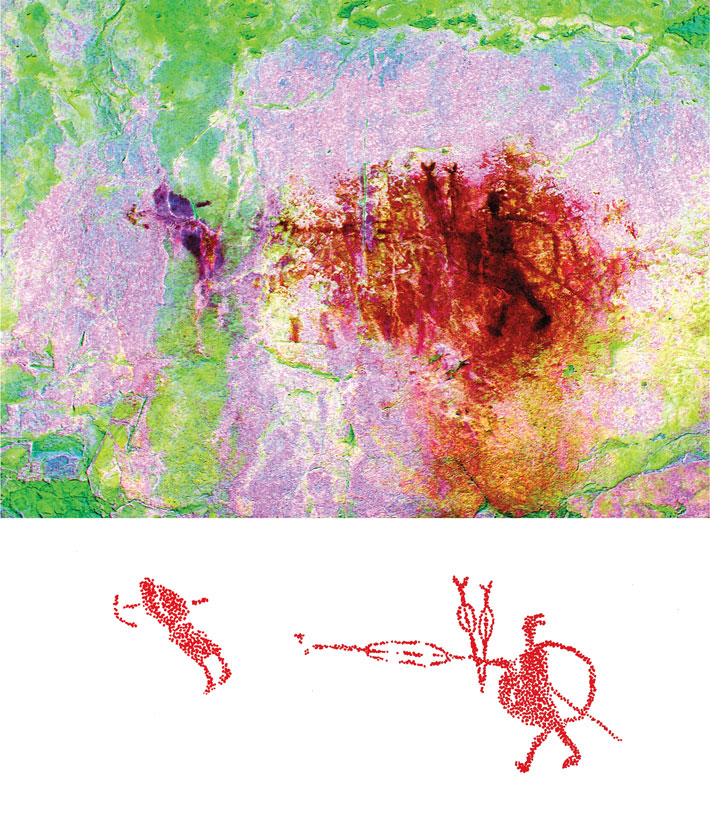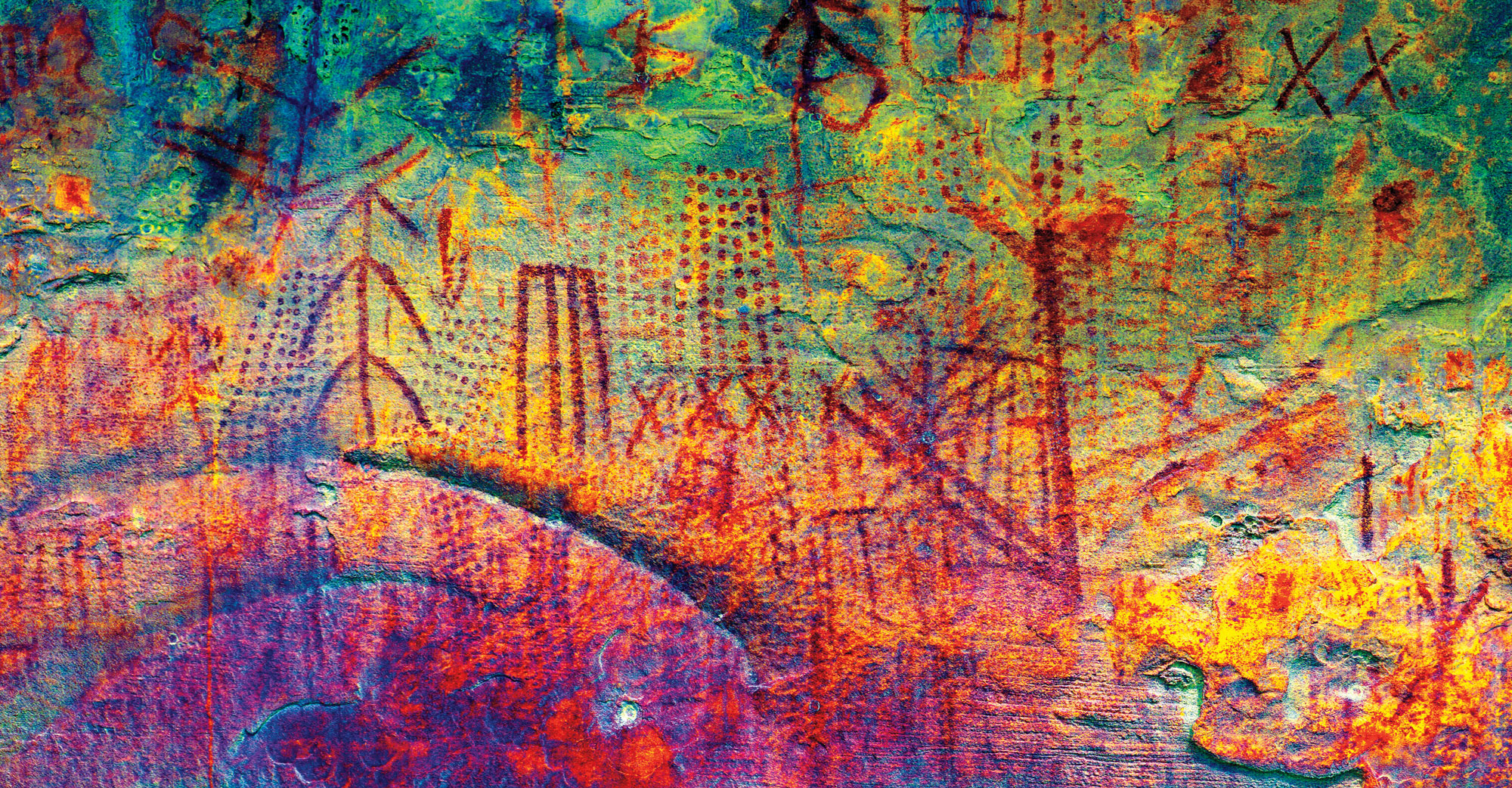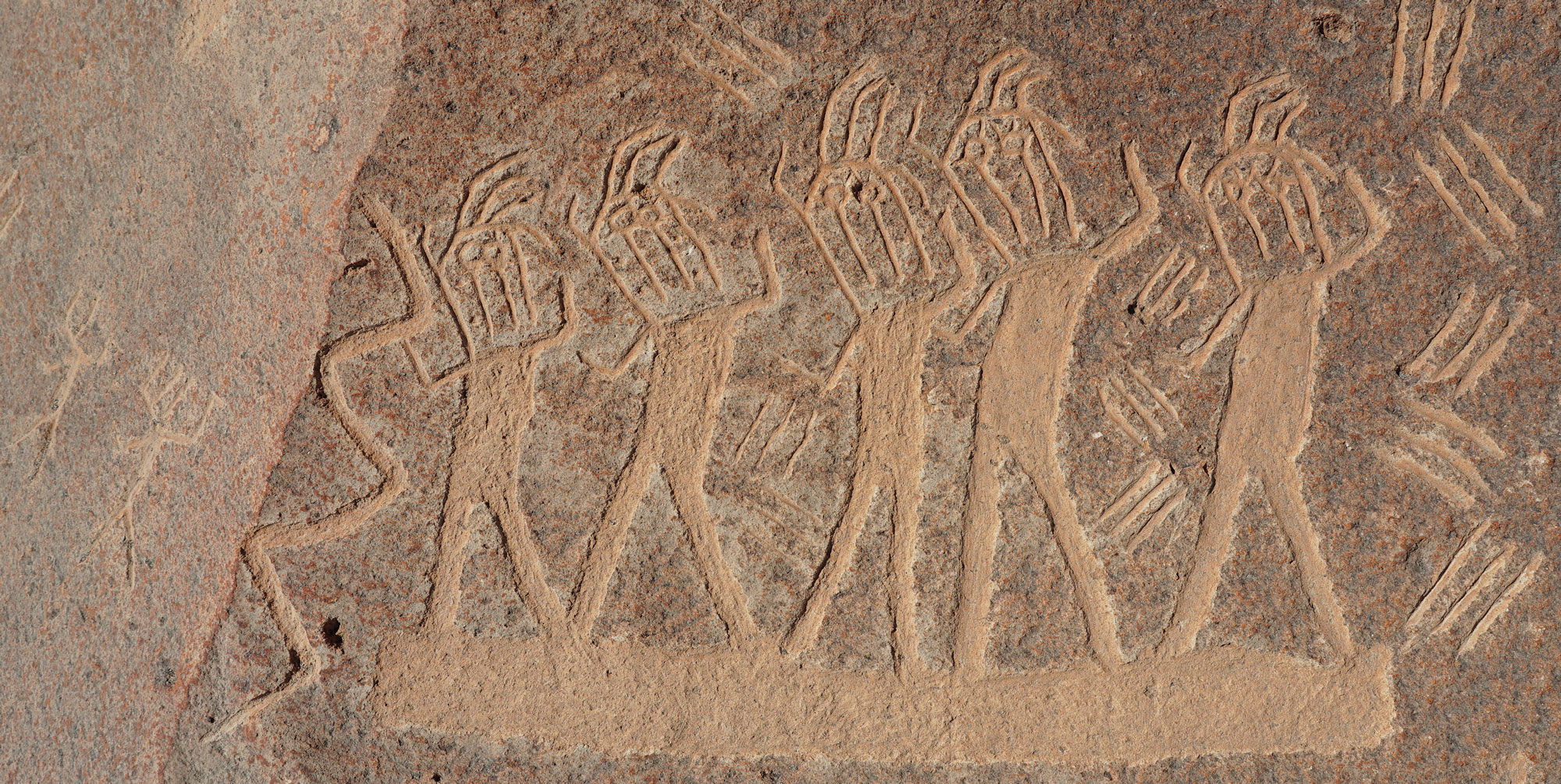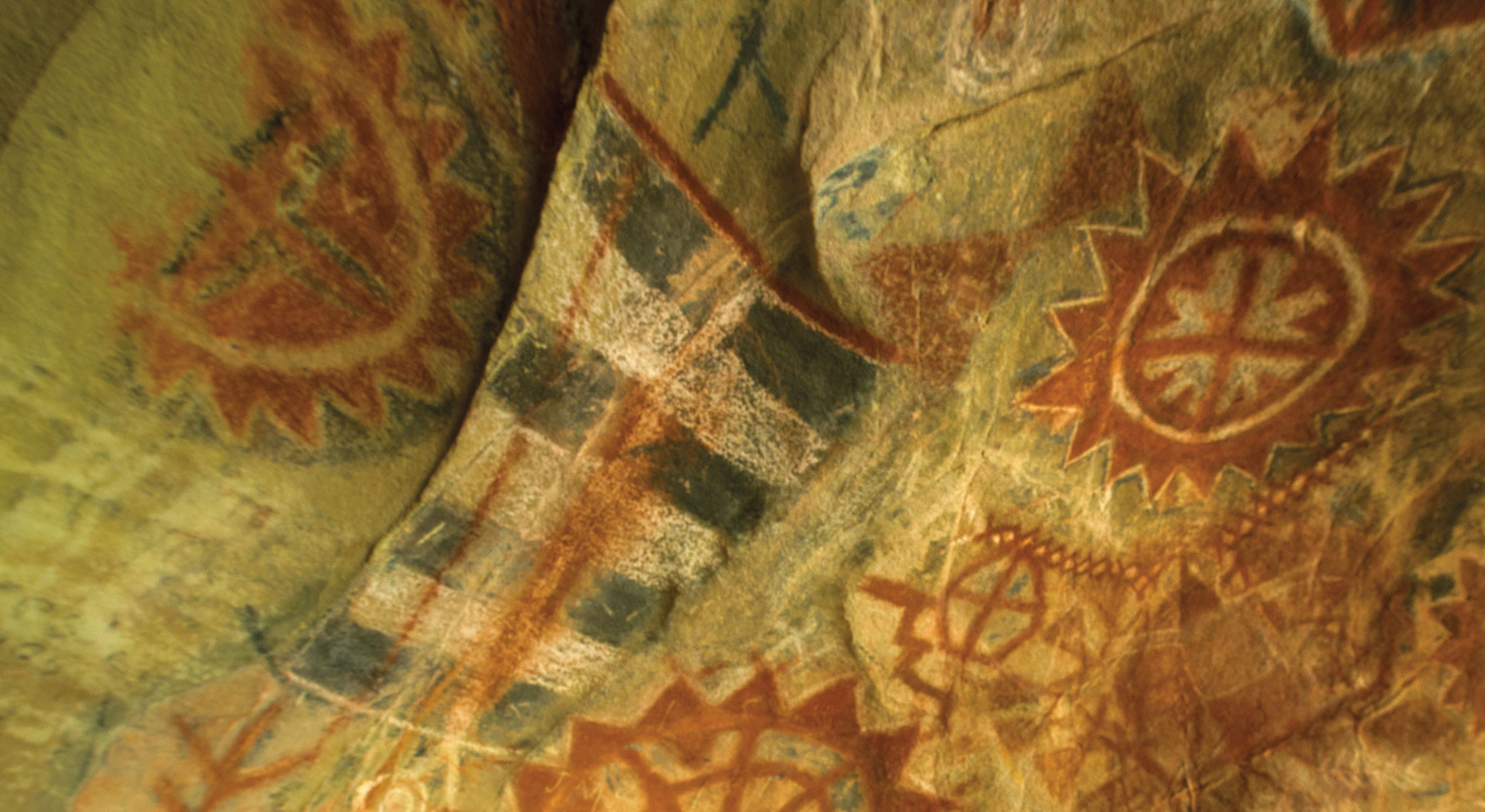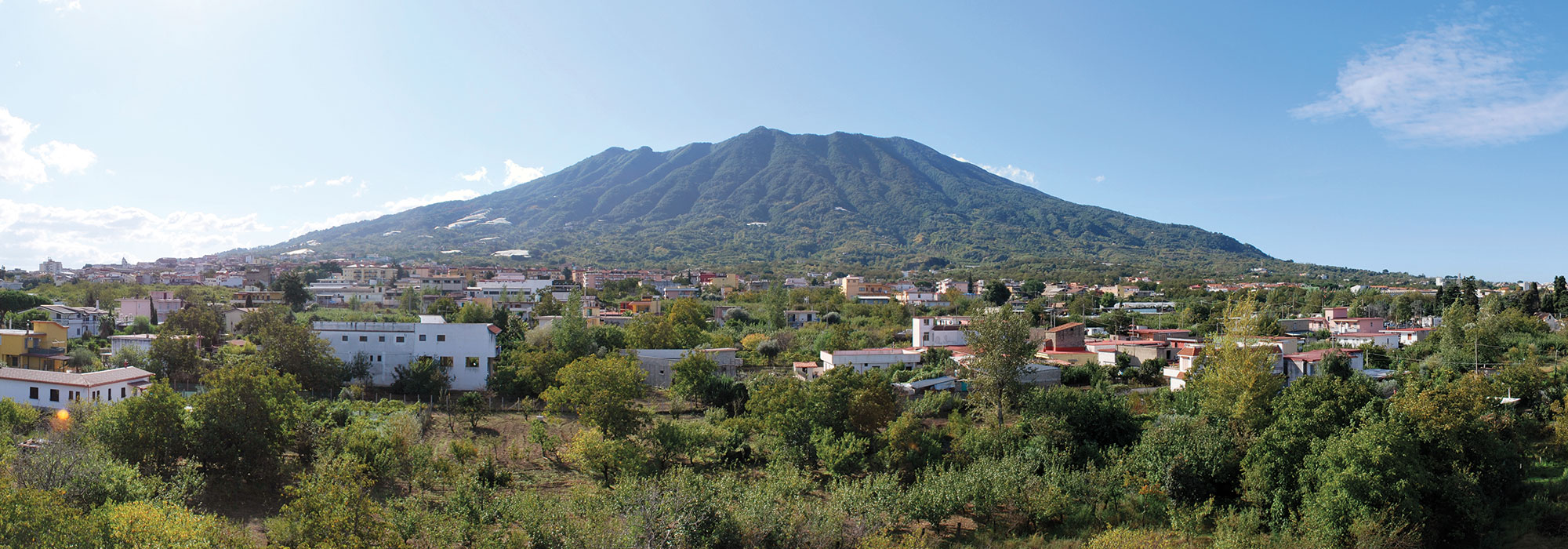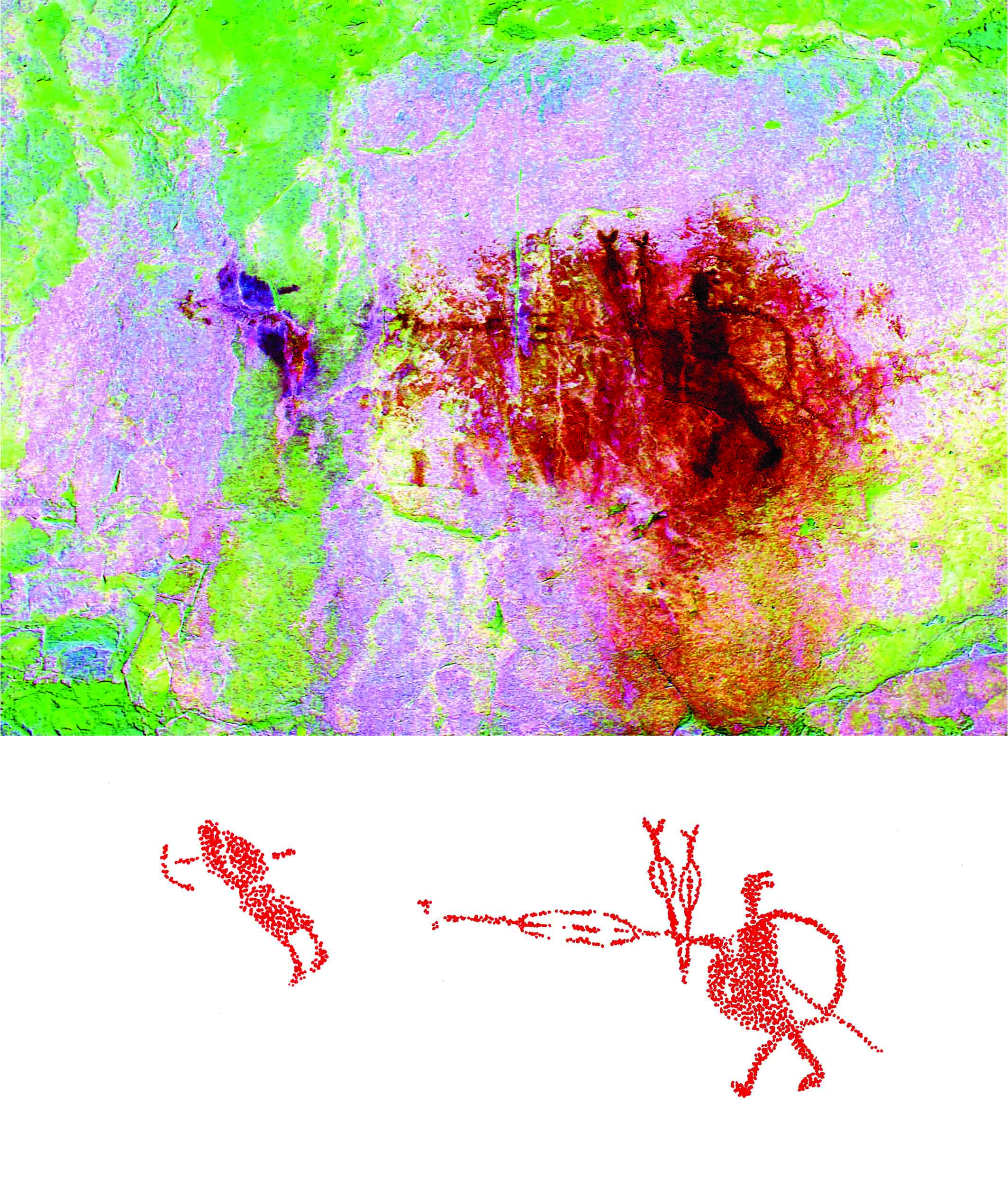
New research has shown that human figures painted in red on a rock art panel in central Montana depict individuals engaged in a life-or-death encounter during an especially fraught historical moment. Archaeologists had previously thought the scene showed a figure carrying a shield and possibly an atlatl, or spear thrower, hunting an animal. New analysis carried out by a team including archaeologist Larry Loendorf of Sacred Sites Research shows that it actually depicts an archer fleeing from a shield-bearing warrior.
Dating of the pigment and the minerals under and on top of the painting reveals that it was created during the Late Archaic period, around A.D. 240 to 425, a time when a people archaeologists call the Avonlea culture first introduced the bow and arrow to the northern Plains. “We think the Avonlea were intruders,” says Loendorf. “This scene captures a moment in time when people who still used atlatls were in conflict with the Avonlea.” A nearby scene shows a figure with a bow who could be part of a larger narrative pitting the archer against the warrior. Perhaps, speculates Loendorf, the depictions illustrate the story of an Avonlea archer venturing onto the hunting grounds of people with deep roots in the region who chased the intruder away. “It wouldn’t surprise me if an event like that took place nearby,” he says. “Then the winners celebrated it by creating this scene.”


